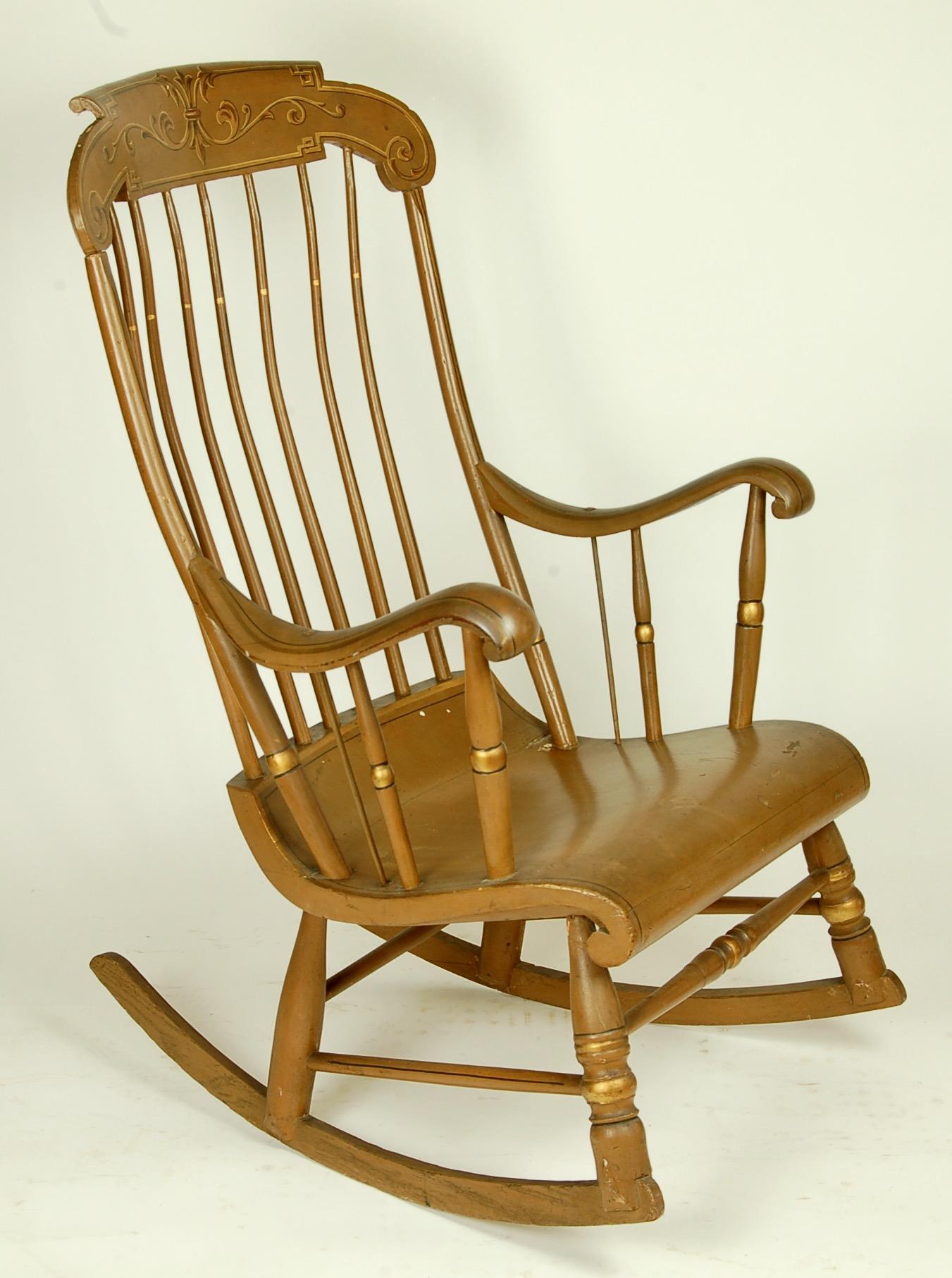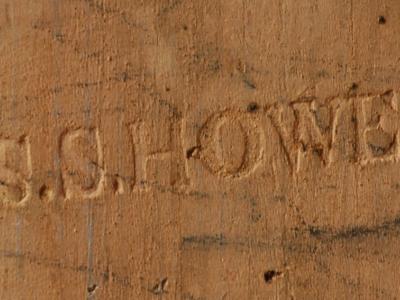Rocking chair
Gardner, Massachusetts
1830-1850
Maker
Samuel S. Howe (1809-1864)
Measurements
40-1/2in x 24-5/8 in x 30 in
Materials
Pine seat, ash rockers, maple legs, mahogany arms, and other unidentified woods
Credit Line
Historic Odessa Foundation, The David Wilson Mansion, Inc.
Accession Number
1971.1463
Inscription
“S. S. HOWE” is stamped into the underside of the seat. ‘DEBORAH HUNT JEFFERIS 1780” is engraved into a brass plaque mounted to the outside center back of the seat.
Condition Notes
See text.
Provenance
The Boston rocker was part of the large collection of Mrs. E. Tatnall (Mary Corbit) Warner. She attached the brass plaque suggesting ownership by Deborah Hunt Jefferis (c. 1762-1842). Warner’s dates and name associations do not appear to have much, if any, basis in fact in this instance. See Philip D. Zimmerman, A Storied Past: Collections of Historic Odessa (2023), p. 47, for further information.
Comments
This rocking chair is of a form broadly recognized as a “Boston” rocker or rocking chair. Newspaper advertisements affirm that such chairs were exported and sold in East Coast urban centers from the 1830s onward. The seats of Boston rockers curved upward in the back, providing the sitter with support and comfort. The downward coil of the seat plane in the front was stylistic. Both upward and downward curves were made with additional pieces of wood glued to the seat board. The rest of the chair derived its design and functionality from longstanding Windsor chairmaking traditions.
The paint and gilded striping on this chair were applied later. Paint covers the mahogany arms that were originally unpainted. It covers seams and wood types. The underside of the seat is painted with a salmon-colored primer. Seams visible in the back side of the crest rail reveals repairs that are not detectable in front. Both downward-curving ears are carefully repaired and secured by pegs from the top of the crest. A seam along the bottom of the center section shows further repair, suggesting that at one time the crest had broken away from the spindles and posts. The roll at the top of the crest shows a series of saw-cuts across the back, likely to allow the maker to bend the wood rod to shape before attaching it to the steam-bent crest with glue and metal fasteners at each end. The left arm split near the rear post and has been repaired with an iron strap applied underneath. Also, the iron rods installed near the back of each arm differ slightly from one another. That on the left side might be original.

